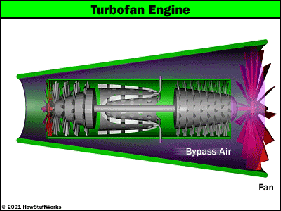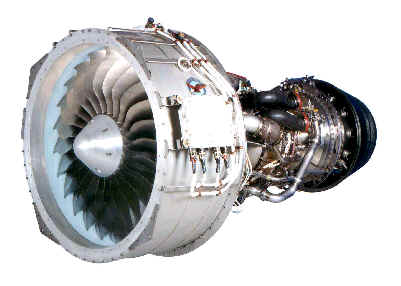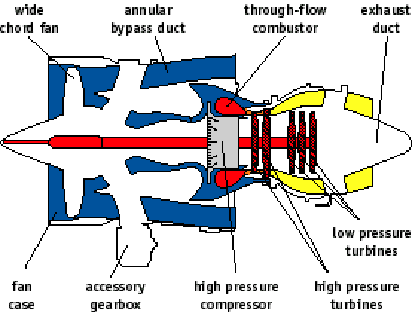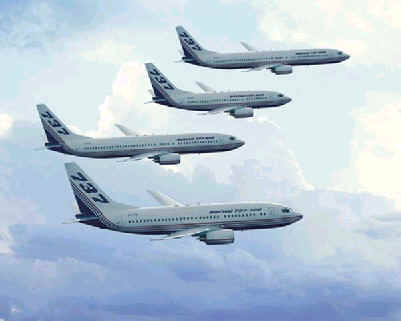 |
The
logic behind the turbo fan is simply this.
The propeller
generates thrust by causing a relatively small acceleration to a
relatively large air mass.
The jet on the
other hand generates thrust by causing a relatively large acceleration
to a relatively small mass of air.
This means that a
propeller is more efficient in slow speeds while the jets is more
efficient at high speeds.
|
 | The turbofan
was designed to take advantage of excellent cruise speed capabilities
of the turbojet and the turboprop which has great short field take off
capabilities. |
|
 |
 |
The inner
workings are much the same as a turboprop except that the fan diameter
is much less than that of a prop but it contains many more blades and
moves the air at a greater velocity.
The fan is also
larger than the compressor and main chamber so the air can be diverted
through the by-pass vents as seen here.
|
 |
As
you can see very similar to both turbojet-prop type engines. There are
all the same type of components just place in different places. |
 |
One
trend you may notice is that looking at the different types of engine
engineers are shifting focus from exhaust as thrust and using clean
air. |
|
 |
 |
 | There are
three classifications of turbo fan engines: low med and high by-pass.
Ranging from a ratio of 1:1 to 4:1. Meaning that 80% of the air is
being moved by the fan and only 20% is being moved by the Core engine. |
 | The picture
show the transition Boeing has made in their 737-600 to 900 series. |
|